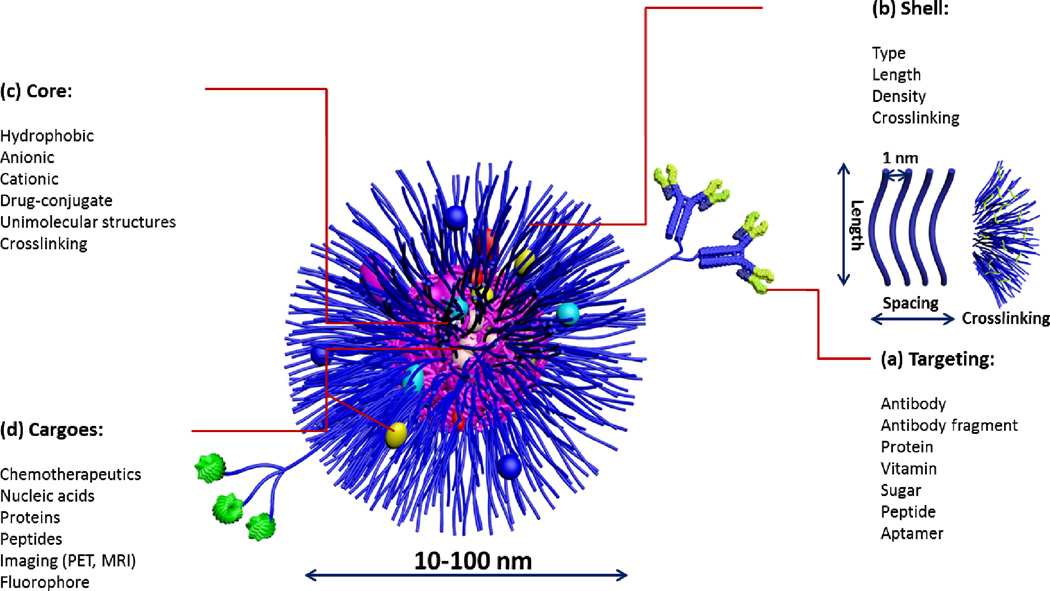Fig. 2.
Composition of multifunctional nanoparticles for biomedical delivery applications: (a) clusters of targeting moieties have been shown to be important for multivalent binding to receptors for enhanced cellular uptake; the use of various ligands (antibody, antibody fragment, peptide) depends on the therapeutic application and disease type, (b) shell: length, spacing and crosslinking of the shell are critical parameters that dictate the blood cir culation time and stability of nanoparticles with ~1 nm spacing found to be efficient in preventing protein adsorption, (c) core: nature of the core dictates the type of the drug to be encapsulated. Crosslinking and conjugation of drugs to the core-forming polymer are common strategies for enhancing the stability of nanoparticles and drug-encapsulation efficiency, respectively. (d) drug: a wide range of therapeutics can be used ranging from small molecules to macromolecular cargoes.

